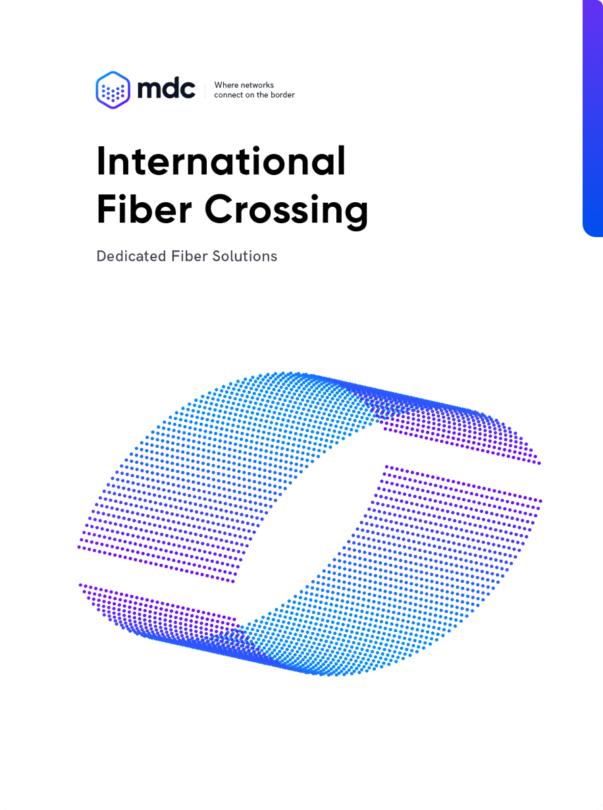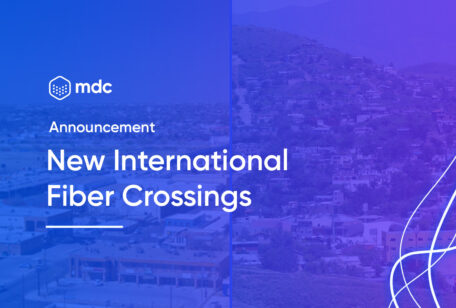
Alberto Caraballo
Imagine an e-commerce startup in Tijuana striving to serve a rapidly growing consumer base on both sides of the border. Every order demands real-time inventory updates, efficient shipping coordination, and responsive customer support—yet border-related latency can hamper even the best strategy. Meanwhile, the San Diego–Tijuana metro area is now home to over five million residents, making it one of the largest binational regions in the continent. And according to recent industry analysis (e.g., TeleGeography), cross-border bandwidth demand between the U.S. and Mexico has been growing by over 40% year-over-year—a clear sign that more enterprises than ever rely on robust digital infrastructure for seamless binational operations.
International Fiber Crossings (IFCs) are the physical fiber routes that bridge the digital infrastructures of two countries, enabling the flow of high-capacity data, voice, and cloud traffic across borders. In San Diego, these crossings link networks in California with those in Baja California, transforming what could be an imposing geographic barrier into an integrated ecosystem built for collaboration and growth.
San Diego has evolved into a prime location for cross-border connectivity, thanks to its strategic position at the junction of California and Baja California. For businesses looking to expand or optimize operations:
- High Broadband Penetration: With 94% of households in San Diego County online and 86.4% in Baja California (among the highest in Mexico), you’re tapping into two digitally savvy markets that expect seamless online experiences.
- Growing Regional Demand: By 2025, analysts project cross-border bandwidth to continue its double-digit annual growth—underscoring the rising need for dependable, scalable solutions.
- Extensive Reach: Fiber routes out of San Diego can extend southward to the Gulf of California and beyond, giving companies a broad geographical footprint without significant latency increases.
In practice, manufacturers can synchronize production data in real time, healthcare facilities can exchange medical records securely, and logistics firms can keep supply chains flowing across two different regulatory environments. When paired with digital transformation objectives, such reliable infrastructure becomes a launchpad for innovation rather than a hurdle to overcome.

Elevating Customer Experience and Expanding Markets
Every millisecond counts in the modern digital landscape. Whether you’re running an online retailer, a media-streaming platform, or a SaaS solution, customer experience hinges on speed, consistency, and reliability:
- Minimized Latency: Cross-border fiber connectivity reduces delay, so end-users in Tijuana and San Diego enjoy equally fast checkouts, video streams, and data access.
- Smooth Scaling: With a stable, high-capacity network, sudden spikes in traffic—during flash sales or major product launches—won’t crash systems or frustrate clients.
- Confidence to Expand: By eliminating performance gaps at the border, businesses can tackle adjacent markets in Mexico or deepen their presence throughout Southern California.
From e-commerce to telemedicine, a cross-border environment that functions like a single, integrated market reshapes the customer journey. Instead of encountering slower load times or region-specific failures, users benefit from a frictionless digital experience. In turn, companies gain the freedom to enter new localities, enhance brand loyalty, and capture a share of a binational market that surpasses five million residents.
Charting a Borderless Future
Maximizing the impact of San Diego’s International Fiber Crossings (IFCs) requires more than just physical infrastructure—it calls for an ecosystem that unites carriers, content providers, and enterprises in one carrier-neutral environment. That’s where MDC’s BorderConnect Platform™ comes in:
- Seamless Integrations: Onboard multiple carriers from both the U.S. and Mexico quickly, avoiding the usual red tape associated with international connectivity.
- Built-In Resilience: Leveraging diverse fiber routes—including those at Otay Mesa and San Ysidro—and a robust peering fabric mitigates the risk of downtime, safeguarding both reputation and revenue.
- Scalable Architecture: As business needs shift—whether you’re rolling out advanced analytics tools or servicing a sudden influx of new customers—you can expand network capacity without a full infrastructure overhaul.
By creating a hub where cross-border traffic can converge reliably, the BorderConnect Platform™ empowers companies to embrace digital transformation at their own pace. Instead of wrestling with cumbersome border constraints, they can focus on exploring new service models, forging binational partnerships, and delivering top-tier customer experiences.
As the San Diego–Tijuana region continues to grow beyond five million residents—and as cross-border bandwidth demand soars—positioning your enterprise for success hinges on strategic connectivity. San Diego’s IFCs offer the backbone for real-time data exchange and rapid expansion, while MDC’s BorderConnect Platform™ transforms that backbone into a dynamic ecosystem built for innovation.
Ready to move past the usual barriers of international growth?
Schedule a call with the MDC Data Centers team to see how your business can leverage this modern fiber infrastructure, delight customers with low-latency services, and unlock entirely new markets in both the U.S. and Mexico.
Get secure and scalable cross-border fiber connectivity.
Download our IFC brochure








